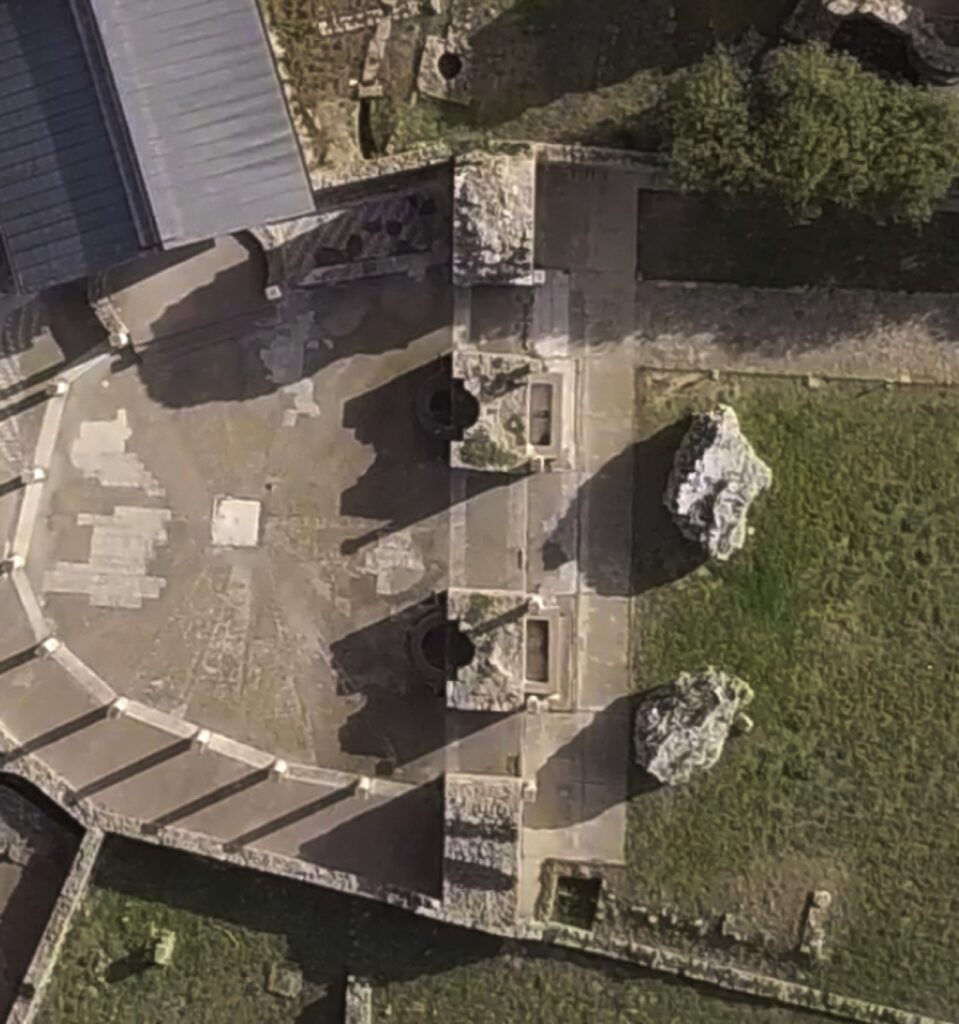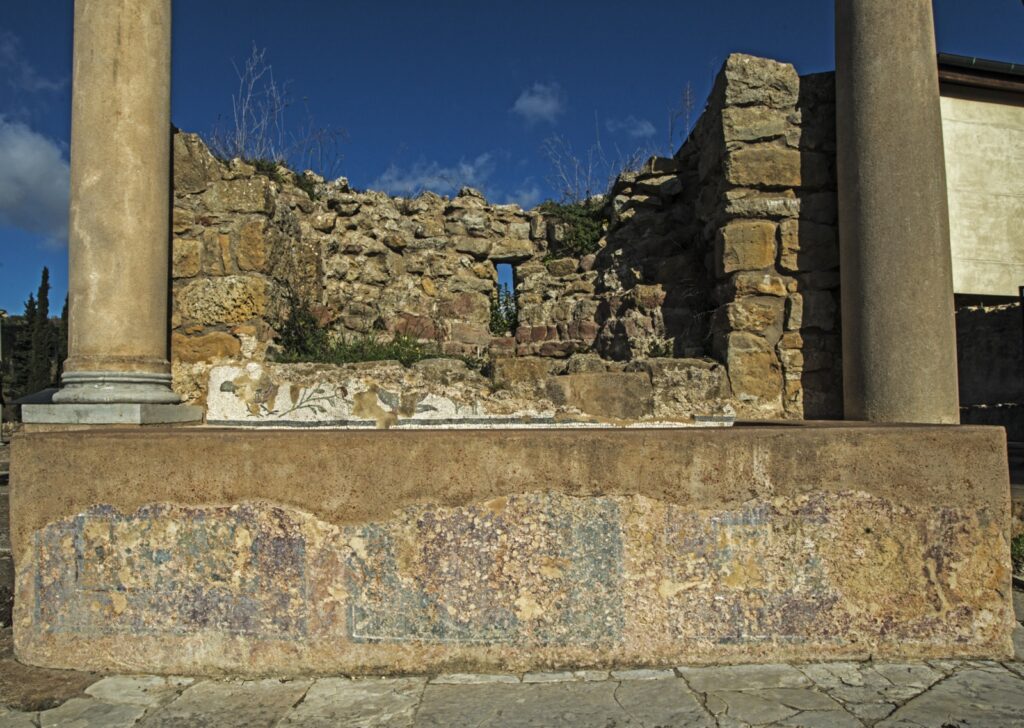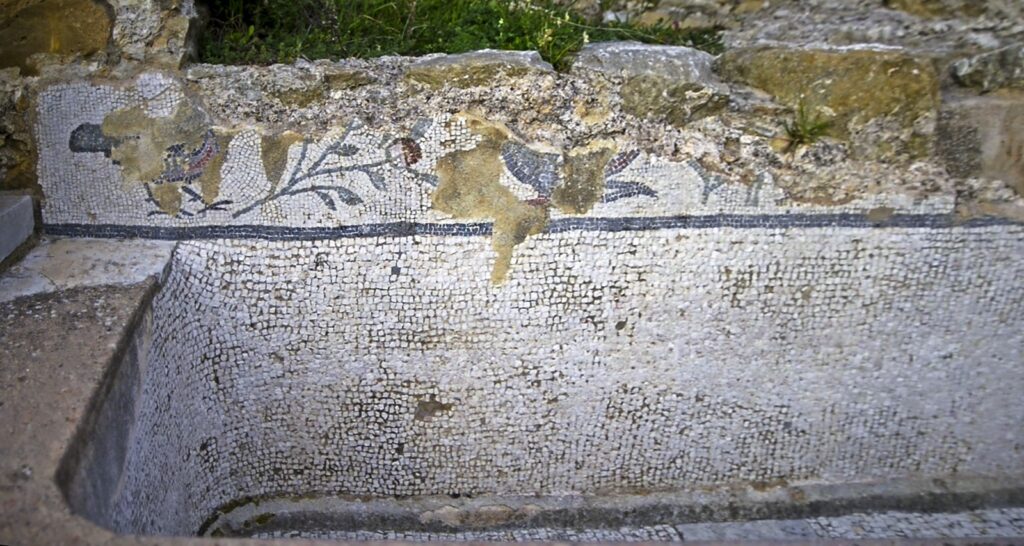The imposing entrance connected the late antiquity building, included in the
latifundium
of
Philosophiana
, to the public road recorded by the
Antonine Itinerary
that connected Catania to Agrigento. The entrance is reminiscent of the Roman triumphal arches due to the presence of a monumental honorary triumphal arch with three
fornices
, originally richly decorated and used to accommodate the distinguished dominus considered the commissioner of the villa. A monumental arch was erected in Rome to celebrate an illustrious individual or victorious general.
The work of architecture had an
ogival arch
greater in size than the two side arches and hinged gates that allowed its closure.
These characteristics suggest the dual function that the villa would have had in the 4th century AD for its dominus: private residence but also a place of reception. In the
imposts
, located between the fornices of the portal, there are two double fountains
 that are different in shape but united by a symmetrical layout that gives greater solemnity to the portal and amplifies the perception of wealth. The pools at the entry of the monumental entrance still preserve faux marble frescoes, visible on the outside of the rectangular basins,
that are different in shape but united by a symmetrical layout that gives greater solemnity to the portal and amplifies the perception of wealth. The pools at the entry of the monumental entrance still preserve faux marble frescoes, visible on the outside of the rectangular basins,  and mosaics that cover the internal areas.
and mosaics that cover the internal areas.
